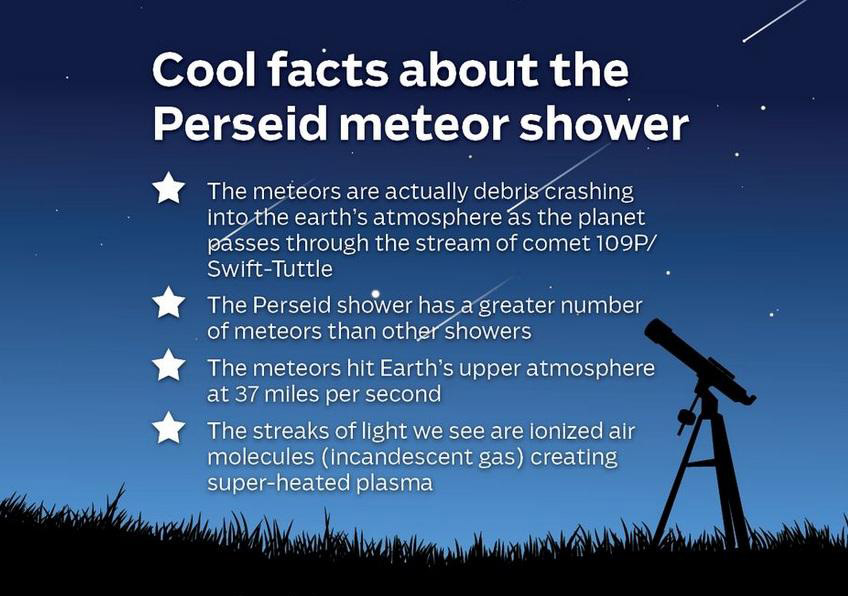August showers set to illuminate skies
June 2, 2018
On August 10-13, an annual event known as the Perseid meteor shower will be visible in the night sky from the constellation Perseus. It will be an exciting chance to inspire curiosity and wonder at our universe.
“The night sky will be dark, so from a dark location observers will see many fainter meteors than if the bright moon were in the sky,” said Dr. Paul Lynam, staff astronomer at the Lick Observatory, located just east of San Jose. This means the showers will be especially magnificent this year because they will coincide with a new moon phase. Stargazers can expect to see numerous shooting stars lighting up the sky on those nights, he explained in an interview.
This spectacle was called “The Burning Tears of St. Lawrence” in the 1800s, named after a famous saint who was killed around the same date by a Roman leader for refusing to give up the church’s treasures and sacred documents.
Meteors, commonly known as “shooting stars,” are very random and could appear anywhere. A meteor is a small rocky or metallic object from outer space that collides with the Earth’s atmosphere at very high speeds, igniting the gases and causing a streak of light to appear in the sky.
“As stargazers on that night look into the sky, they might [see] streaks of light occurring one or two every minute,” staff astronomer of the Chabot Space and Science Center, Conrad Jung, explained to The Pioneer.
The Perseid shower is unique because of the frequency and quantity of debris that will strike the atmosphere in that two to three day period. In addition, the Earth’s orbit will intersect the path of dust and rock particles left behind from the tail end of a comet known as Swift-Tuttle, discovered in 1862. Chinese astronomical records show that the Swift-Tuttle comet was seen as far back as the year 188. In its current orbit around the sun it has left a trail of particles with which we collide annually.
The Hale-Bopp comet was the last to fly close to earth in 1997.
The best place to view the Perseid meteor showers would be anywhere away from city lights, to maximize the chances of seeing even the faintest meteor. Unfortunately, the Bay Area is full of light pollution, which means a road trip away from the city is the best option.
Find “a place that has the most open access to the sky [and] that is as dark as you can find,” Jung recommends. Choose “somewhere where there is convenient, safe parking and preferably facilities like restrooms, ” Lynam suggests.
Looking at a map that displays the level of light pollution in the Bay Area, the areas with the darkest skies are northwest towards Mill Valley, south towards the Santa Cruz Mountains or southeast towards Mount Hamilton.
No special equipment like telescopes or binoculars required, just something comfortable to sit on, warm clothing, someone or people to share it with and most importantly, the element of curiosity.
“Comfort is the most important aspect: meteor-watching should be an enjoyable, rewarding experience, not a test of personal endurance,” said Lynam.
Natural events such as this put into perspective our place in the universe, even if it is only limited to one planet, he noted.
It is safe to say we are fortunate to be alive for a period of time when we know more about the universe than at any other point in human history. Thanks to the countless physicists, astronomers, mathematicians as well as average curious individuals who have looked up at the night sky and just wondered “why or how?” Looking out the Earth’s windshield, which is the sky, you get a front row seat to all of it.
For a memorable summer experience, Chabot Observatory will hold special events on the days of the showers. Details about the event, how to participate or ways to learn more about the universe can be found on their website.
















